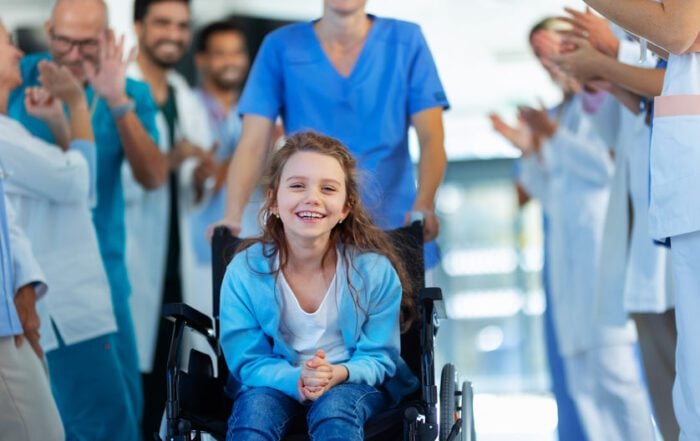Gradual Decline Of The Joints
Responsible for much of the body’s movements, joints are where 2 bones meet. Over time, joints can become prone to pain. While some discomfort is due to overuse, most chronic cases are due to arthritis. More than 23% of adults struggle with arthritis, the wear and tear of cartilage that covers the joints. Constant rubbing and inflammation wear away the cartilage leading to pain, stiffness, and swelling. These symptoms worsen with age. As a result, more people are turning to total joint replacement (TJR) to combat the gradual decline of these joints.

What is TJR?
Total joint replacement is a surgical procedure aimed at improving joint function. Surgeons do over 1 million joint replacements yearly, with the process consisting of 2 parts. First, the surgeon removes all the damaged cartilage and the bone that forms the joint. Next, a prosthetic joint is installed to mimic the functions of the original parts. The artificial joint has the same function and mechanics as the patient’s natural joint. TJR is typically performed on significant joints like the knee, hip, shoulder, and ankle. Patients who opt for TJR have typically gone several months or years trying to improve the condition with conservative treatment. However, when that fails, TJR can provide several benefits.
Enjoy less joint pain
Arthritis patients frequently have joint pain and stiffness, made worse by long periods of standing or walking. Over time, inflammation also increases the frequency and intensity of pain. There are also multiple types of arthritis, like rheumatoid arthritis (RA), which flares up without warning. Installing the prosthetic joint removes the constant rubbing of the joint and the associated stiffness. Recent statistics show 90% of people have mild to no pain after surgery.
More movement
Arthritis can limit a patient’s movement. As a result, some patients struggle to walk, run, or enjoy social activities. Even with ongoing pain management, like medication or physical therapy (PT), pain can persist. This lack of movement can be frustrating and lead to poor quality of life. After surgery, some patients can move immediately. Then, after months of PT, patients discover that walking, running, and even sports are possible again.
The minimally invasive benefit
Total joint replacement has come a long way in recent years and is now performed with minimally invasive techniques. In other words, the surgeons only need to make small incisions to replace the joint. A small device called a scope allows the surgeon to enlarge the view of the joint. From there, small tools perform the replacement. Minimally invasive surgery has several advantages, including less post-operative pain, faster recovery, more minor scars, and a high success rate.
Improves future health
Chronic arthritis can also lead to other health complications. Patients are less likely to move around. Sedentary behavior can increase the risk of other chronic diseases. People with arthritis are also more likely to suffer joint fractures. All these lead to a reduction in the patient’s lifespan. Installing a new joint allows the patient to participate in healthier behaviors and have a better quality of life.
Consider TJR for arthritis
Over time, the pain, discomfort, and limited movement caused by arthritis can become unbearable. Some people benefit from conservative treatment. Other individuals look to TJR for a more effective way to relieve pain and restore movement. Patients can enjoy a new lease on life with a brand new joint.
Recent Posts
What To Do About Hip Pain: Is It Time To See An Orthopedic Surgeon About Labral Repair?
Hip pain should not be overlooked, as the issue could be a labral tear. Symptoms like pain and instability require an orthopedic surgeon’s assessment.
ACL Repair: Will You Have Range Of Motion With Your Knee After Recovery & Physical Therapy?
After an ACL injury, ROM can be negatively affected. ACL repair surgery helps restore function, but physical therapy is essential to ROM.
Arthroscopy: What Are The Benefits Of This Minimally Invasive Outpatient Orthopedic Procedure?
Arthroscopy can help diagnose or treat joint conditions. Benefits of the MIS include faster recovery, less pain, and fewer scars.
Posterior Interbody Lumbar Fusion: What Are The Benefits Of PLIF For People With Back Pain?
People with chronic back pain may benefit from posterior interbody lumbar fusion surgery. PLIF can reduce pain and improve stability.








